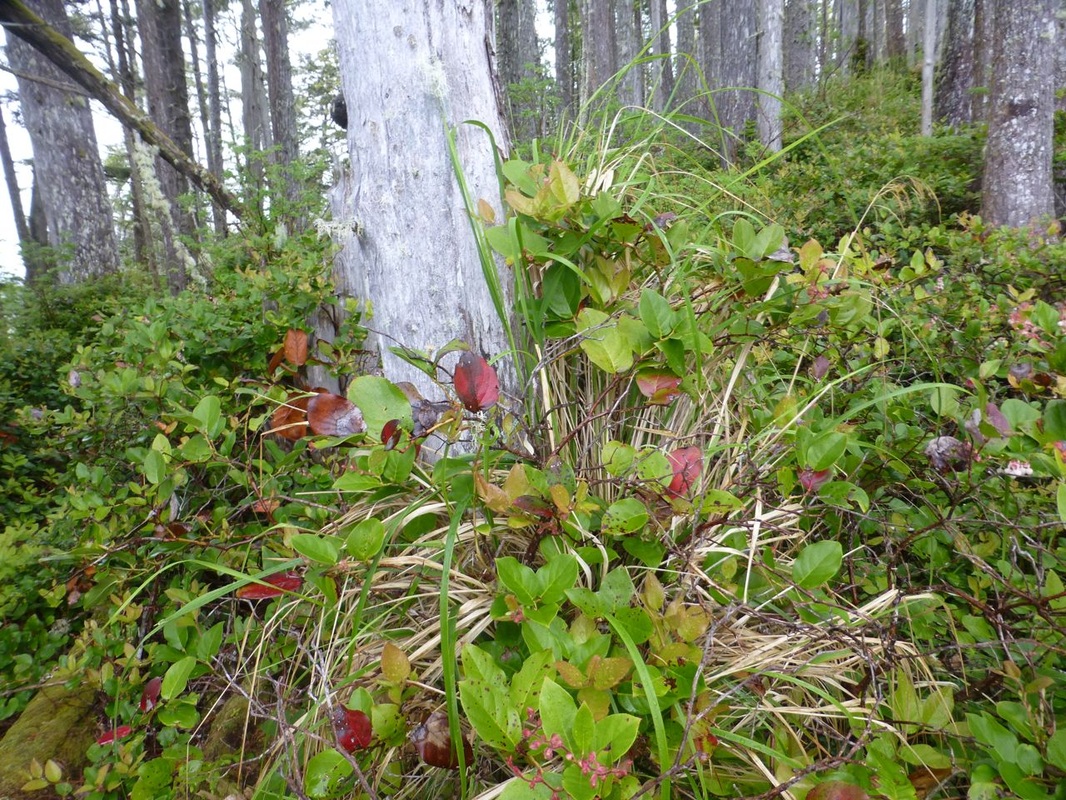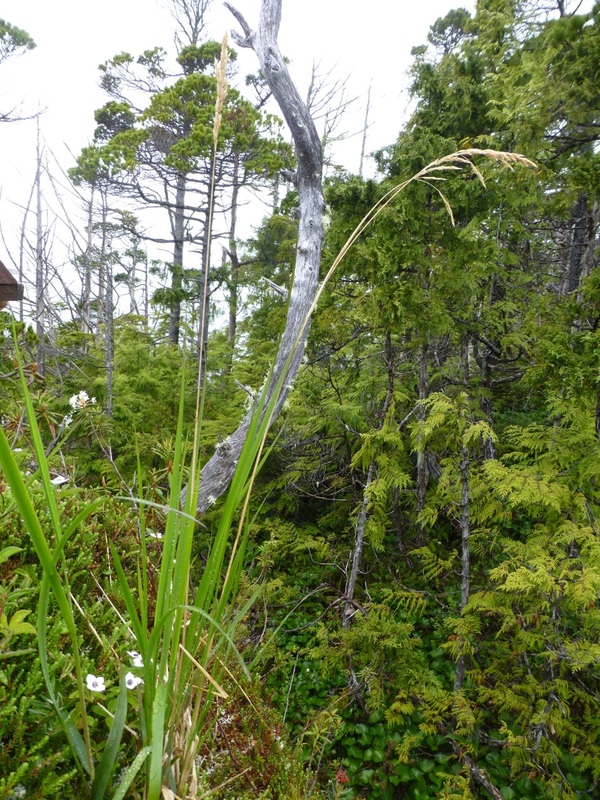Nootka reedgrass • Calamagrostis nutkaensis
Identification
Nootka reedgrass is a tufted perennial grass species that grows in clumps to a height of 1.5 m. Its tough leaves get to about 1 cm wide, may be flat or folded, and have thickened ligules. Flowering nootka reedgrass bears a loosely flowering branching inflorescence (panicle) 12-30 cm long, held upright by stiff branches and bearing purplish to greenish-yellow flowers in spikelets. A correct identification of this species requires close examination of the flower and ligule structure; see the E-Flora BC species page for detailed identification information. Click here for more photos of Nootka reedgrass.
Habitat & Range
Nootka reedgrass grows in a variety of coastal habitats: cliffs, sand dunes on beaches, slide tracks, wet to dry meadows and clearings, bogs and muskeg, and open forests, particularly ones dominated by Sitka spruce bordering shorelines. It is found along the coast from Alaska to California.
Similar Species
Slimstem reedgrass (Calamagrostis stricta) has narrower, denser panicles and narrower leaves.
Nootka reedgrass is a tufted perennial grass species that grows in clumps to a height of 1.5 m. Its tough leaves get to about 1 cm wide, may be flat or folded, and have thickened ligules. Flowering nootka reedgrass bears a loosely flowering branching inflorescence (panicle) 12-30 cm long, held upright by stiff branches and bearing purplish to greenish-yellow flowers in spikelets. A correct identification of this species requires close examination of the flower and ligule structure; see the E-Flora BC species page for detailed identification information. Click here for more photos of Nootka reedgrass.
Habitat & Range
Nootka reedgrass grows in a variety of coastal habitats: cliffs, sand dunes on beaches, slide tracks, wet to dry meadows and clearings, bogs and muskeg, and open forests, particularly ones dominated by Sitka spruce bordering shorelines. It is found along the coast from Alaska to California.
Similar Species
Slimstem reedgrass (Calamagrostis stricta) has narrower, denser panicles and narrower leaves.
References
Calamagrostis nutkaensis (J. Presl) J. Presl ex Steud. In Klinkenberg, Brian. (Ed.). E-Flora BC: Electronic Atlas of the Plants of British Columbia. Lab for Advanced Spatial Analysis, Department of Geography, University of British Columbia, Vancouver. Accessed 23/12/2014.
Pojar, J. and MacKinnon, A. (1994). Plants of Coastal British Columbia. Vancouver, BC: Lone Pine Publishing. P. 365.
Authors and editors of page
Kelly Fretwell, Ian Cruickshank, and Brian Starzomski (2014).
Calamagrostis nutkaensis (J. Presl) J. Presl ex Steud. In Klinkenberg, Brian. (Ed.). E-Flora BC: Electronic Atlas of the Plants of British Columbia. Lab for Advanced Spatial Analysis, Department of Geography, University of British Columbia, Vancouver. Accessed 23/12/2014.
Pojar, J. and MacKinnon, A. (1994). Plants of Coastal British Columbia. Vancouver, BC: Lone Pine Publishing. P. 365.
Authors and editors of page
Kelly Fretwell, Ian Cruickshank, and Brian Starzomski (2014).





